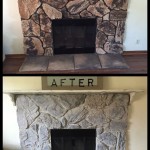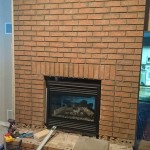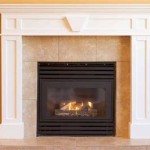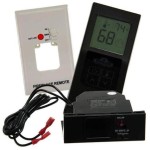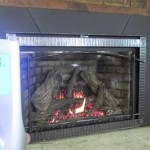Gas Fireplace Parts: A Comprehensive Guide
Gas fireplaces offer unparalleled convenience and warmth, but they are complex appliances requiring regular maintenance and occasional repairs. Understanding the various parts that make up a gas fireplace is crucial for homeowners seeking to troubleshoot issues, perform routine cleaning, or even upgrade their fireplace's features. This guide provides a comprehensive overview of the key components of a gas fireplace, their functions, and common maintenance considerations.
The Heart of the System: The Burner and Pilot Assembly
The burner and pilot assembly form the core of a gas fireplace, responsible for generating the flames. The burner is a metal structure with multiple ports that allow gas to flow out and ignite. It is typically made of cast iron or stainless steel for durability. The pilot assembly, on the other hand, is a small burner that constantly burns a reduced flame to ignite the main burner when the fireplace is turned on. This pilot flame is crucial for reliable ignition and safety. The pilot assembly includes a thermocouple, a safety device that senses the pilot flame and shuts off gas flow if the flame extinguishes unexpectedly.
During maintenance, inspecting the burner for signs of corrosion or damage is essential. Additionally, cleaning the pilot assembly, including the thermocouple, can improve its performance and ensure consistent ignition. If the pilot flame appears weak or irregular, it may be necessary to adjust the pilot valve or replace the thermocouple.
Fuel Delivery and Control: The Gas Valve and Piping
The gas valve, often located near the fireplace, serves as a control point for regulating gas flow to the burner. This valve is connected to the gas line by a series of pipes that deliver fuel to the fireplace. The gas valve typically has a control knob or switch for turning the fireplace on and off, and it may also include a safety feature to prevent excessive gas flow in the event of a malfunction.
Inspecting the gas valve for leaks and ensuring proper sealing is critical. Regular maintenance checks can help prevent gas leaks and ensure safe operation. If you notice any leaks or unusual noises during operation, contacting a qualified gas technician is essential to address the issue promptly.
Aesthetics and Functionality: The Fireplace Mantel, Log Set, and Surround
The fireplace mantel, log set, and surround add visual appeal and functional elements to the fireplace. The mantel serves as a decorative frame above the fireplace opening, often holding items such as pictures, candles, or other decorative accents. The log set, which typically consists of ceramic or faux logs, creates a realistic visual effect. Finally, the surround, typically made of stone, brick, or tile, enhances the fireplace's aesthetic appeal and provides a protective barrier around the firebox.
Maintenance for these components primarily involves keeping them clean and free of dust or debris. Routine cleaning of the mantel and surround helps preserve their appearance and prevents the accumulation of flammable materials. If you are using a real log set, it's essential to check for cracked or damaged logs that could be a fire hazard and replace them as needed.
Ensuring Proper Operation: The Thermostat and Remote Control
Modern gas fireplaces often come equipped with thermostats and remote control systems to enhance user convenience and control. The thermostat, typically mounted on the wall or integrated into the fireplace control panel, allows you to set desired room temperatures. When the room temperature drops below the set point, the thermostat activates the fireplace to provide heat. Remote controls offer a more flexible way to turn the fireplace on and off, adjust flame levels, and control other features.
Regularly checking the thermostat's batteries and ensuring the remote control's functionality are crucial for optimal operation. If the thermostat or remote control malfunctions, it may be necessary to troubleshoot the issue or seek professional assistance.
Additional Gas Fireplace Components
Beyond the core components discussed above, several optional features can enhance a gas fireplace's functionality and appeal. These include:
- Blower: A blower system circulates warm air throughout the room, increasing heat distribution and efficiency.
- Log Lighter: This feature simplifies starting the fire, eliminating the need for matches or lighters.
- Electronic Ignition: Many gas fireplaces use electronic ignition systems to ignite the pilot flame, offering enhanced safety and convenience.
- Glass Doors: Glass doors provide a protective barrier around the fireplace opening, reducing heat loss and providing a stylish aesthetic.
- Fireplace Screens: Fireplace screens act as a protective barrier against sparks and embers, preventing accidents and keeping pets and children safe.
Understanding the various parts that make up a gas fireplace empowers homeowners to perform basic maintenance, troubleshoot issues, and ensure safe and efficient operation. By familiarizing yourself with the functions of each component, you can make informed decisions regarding cleaning, repairs, and potential upgrades to enhance your fireplace experience.

Gas Fireplace Natural Bdm35 The Cozy Cabin Lennox Hearth Parts

Unvented Decorative Gas Fireplace Cfpf Cmp The Cozy Cabin Lennox Hearth Parts

Napoleon Parts

Cgcftn Fireplace Parts For Desa Comfortglow Partsfor Com

A Plus Inc Superior B800 Replacement Parts And Accessories

Napoleon Parts

Gas Fireplace Vermontcastings Parts For Vermont Castings Majestic

Gst536 See Through Natural Vent Gas Fireplace 274 276 The Cozy Cabin Stove Parts

G2000 The Cozy Cabin Stove Fireplace Parts

Gas Fireplace Vermontcastings Parts For Vermont Castings Majestic
Related Posts



